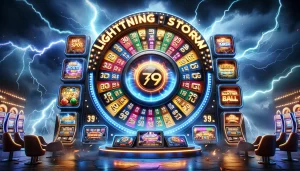
If you’re holding a poker tournament, you’ll need to determine the correct poker chip distribution. One way to achieve this is to flatten out the color and denomination of the chips. Instead of issuing each player a specific number of T25 chips, you could issue each participant a different color or mix and match colors. If you have 20 players, you’d use two different colors of T25 chips, and one color would be used for each blind.
If you’re playing poker in a tournament, you’ll want to use a four-to-one split. This isn’t a standard ratio, but it’s an acceptable starting point. While this ratio might not be perfect, it will help you avoid confusion, especially during color-ups and rebuys. A two-to-one split might be acceptable for cash games. However, if you’re playing with a mixed bag of chips, you’ll want to have a poker chip chart handy.
Another way to ensure that your poker game is fair is to use a poker chip calculator. A poker chip calculator will show you how many chips each color represents, as well as their denominations. You can also calculate the value of each poker chip in a given set of poker chips, and make adjustments accordingly. It’s very easy to get confused and muck up your game, so it’s best to stick to the rules of poker chip distribution.
A poker chip distribution chart will ensure that players do not have to constantly make change during a game. It will also help keep the number of chips on the table under control. This is important if you’re going for a deep stack game or a fast-paced turbo game. When chips are distributed evenly, this makes the game more manageable and prevents players from gambling away their money. You should keep in mind that the number of players at each table varies, so make sure to use a poker chip chart that suits your game.
You can also try using a chart to calculate the number of chips each player receives. The most important aspect of a poker chip chart is the number of chips each player receives. If the number of chips is high, it makes it harder for people to spot the highest denomination chips. A poker chip chart will help you decide how many of each chip denomination to use, which chips are worth the most, and how many you should distribute per player.
When selecting a poker chip distribution chart, remember that the colors should be based on the buy-in amount. For example, a no-limit poker tournament would require three poker chip sets with four different colors: red, blue, green, and purple. Choosing these colors is a great way to ensure a fair game for everyone. If you’re planning to organize a poker tournament, it will help to choose a poker chip distribution chart and stick to it.








